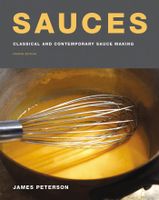Label
All
0
Clear all filters
Liaisons for Braising Liquids
Appears in
Published 1991
At times, especially when no flour has been used to brown the meat and no pork trotters or rinds have been added during braising, the braising liquid may be too thin or not flavorful enough. The most straightforward approach is simply to reduce it until it has the proper flavor and texture. If this is impractical, there are several methods that can be used to thicken the liquid. In classic French cooking, beurre manié is the thickener most often used for red wine–moistened stews and braises. This solution has the advantage of being quick and, if carried out properly, of not giving the stew a starchy taste. For veal and pork that has not been cooked with red wine, the resulting clear, jus-like braising liquid can be thickened with cornstarch or arrowroot (first worked to a thin paste with a little water or stock), which if used carefully will contribute a natural jus-like sheen and consistency. In some recipes, such as a classic chicken fricassée, the thickener—in this case, cream and egg yolks—is inherent in the definition of the dish. Well-reduced stocks or glace de viande can also be added to braising liquids to give them body and lengthen them if not enough is available to moisten the meat. If using modernist techniques and ingredients, try various hydrocolloid thickeners such as 0.2% xanthan gum or 3% Ultra-Sperse 3. If you want to emulsify clarified butter or other nonemulsified fat such as oil into the sauce, work 1% or 2% liquid lecithin into the fat component and blend 0.5% propylene glycol alginate into the liquid base.
Become a Premium Member to access this page
Unlimited, ad-free access to hundreds of the world’s best cookbooks
Over 160,000 recipes with thousands more added every month
Recommended by leading chefs and food writers
Powerful search filters to match your tastes
Create collections and add reviews or private notes to any recipe
Swipe to browse each cookbook from cover-to-cover
Manage your subscription via the My Membership page
Best value
Part of
Advertisement
Related Recipes
-
-
-
-
Related Reference
-
-
-
-
Advertisement
The licensor does not allow printing of this title



